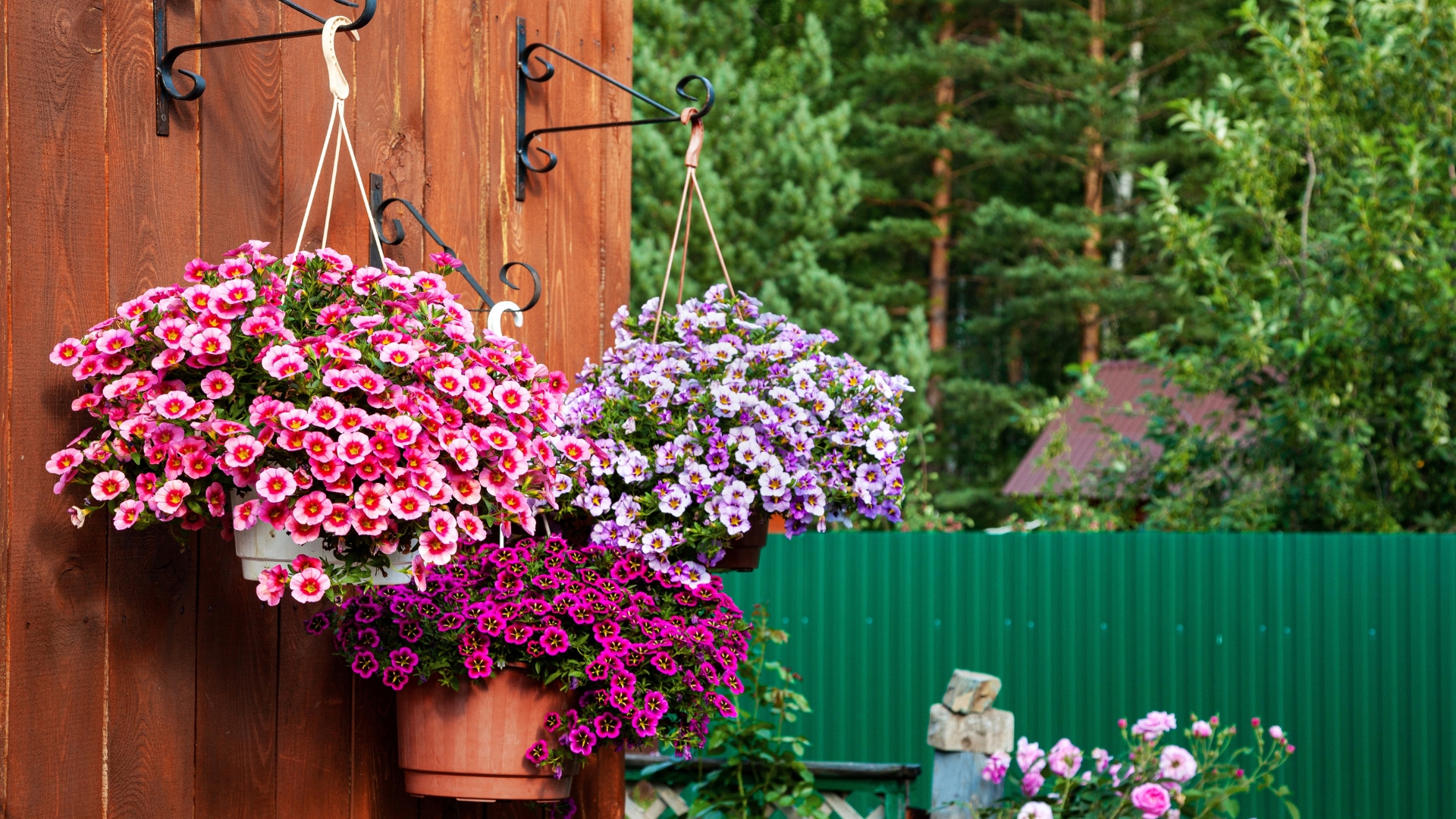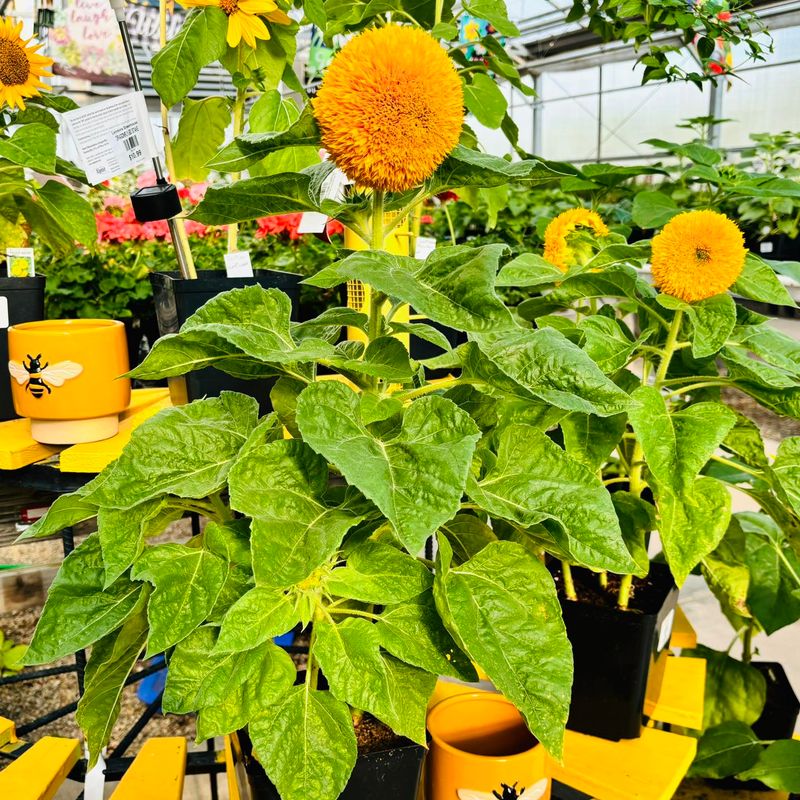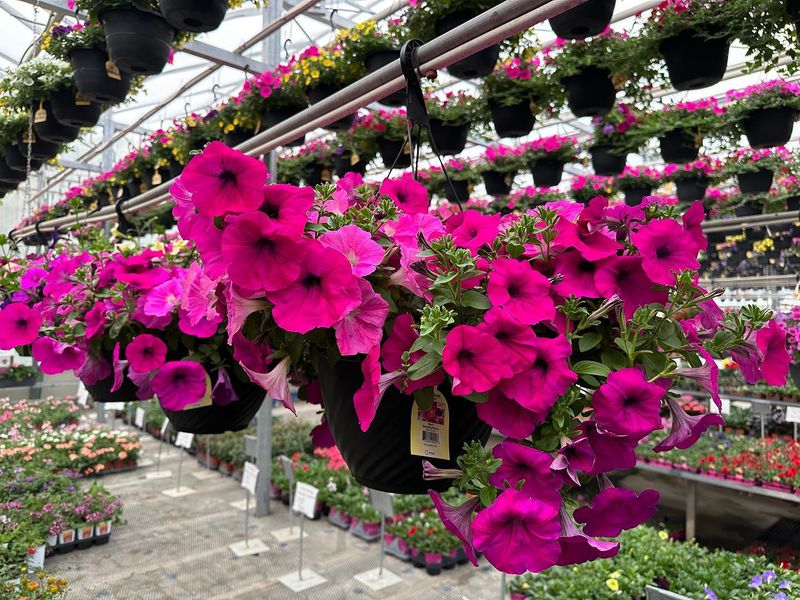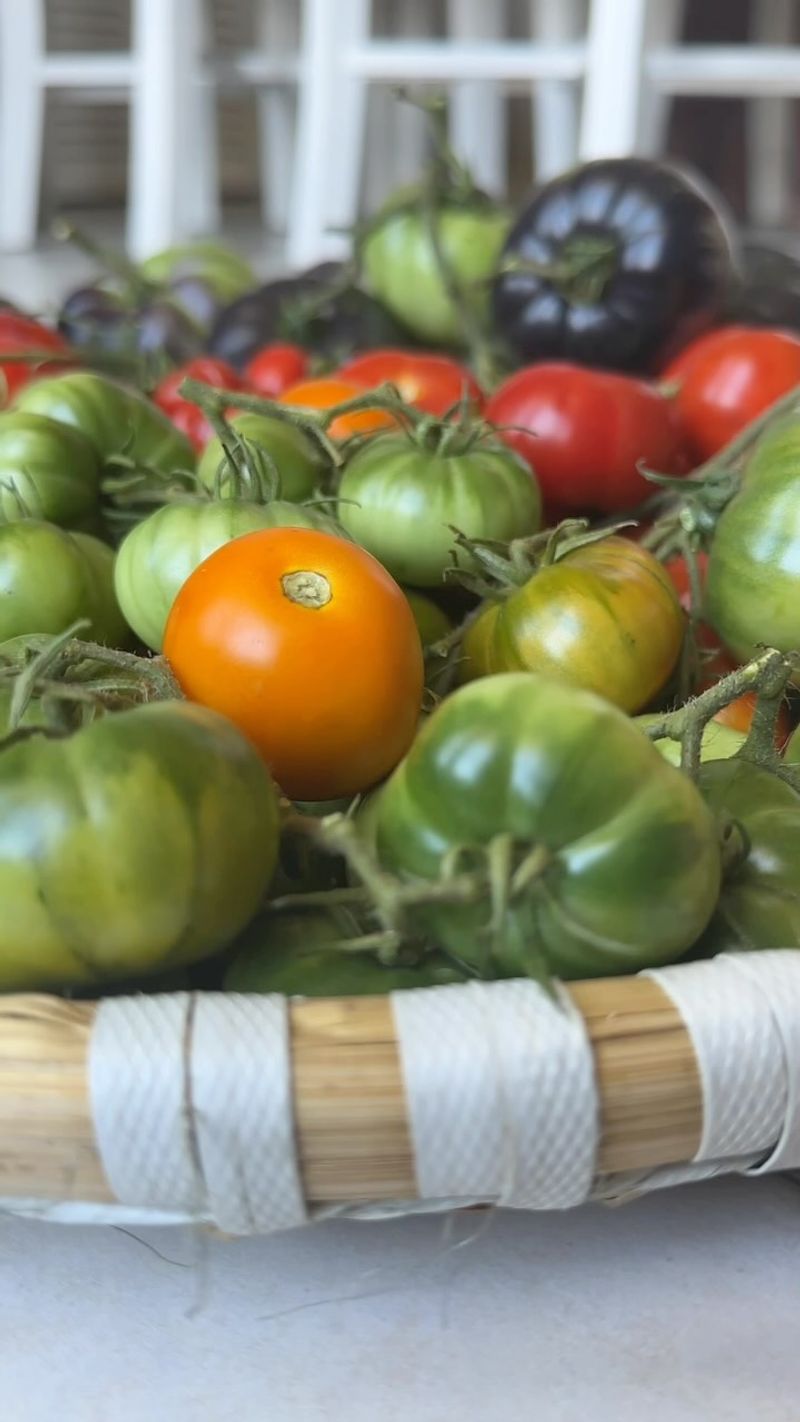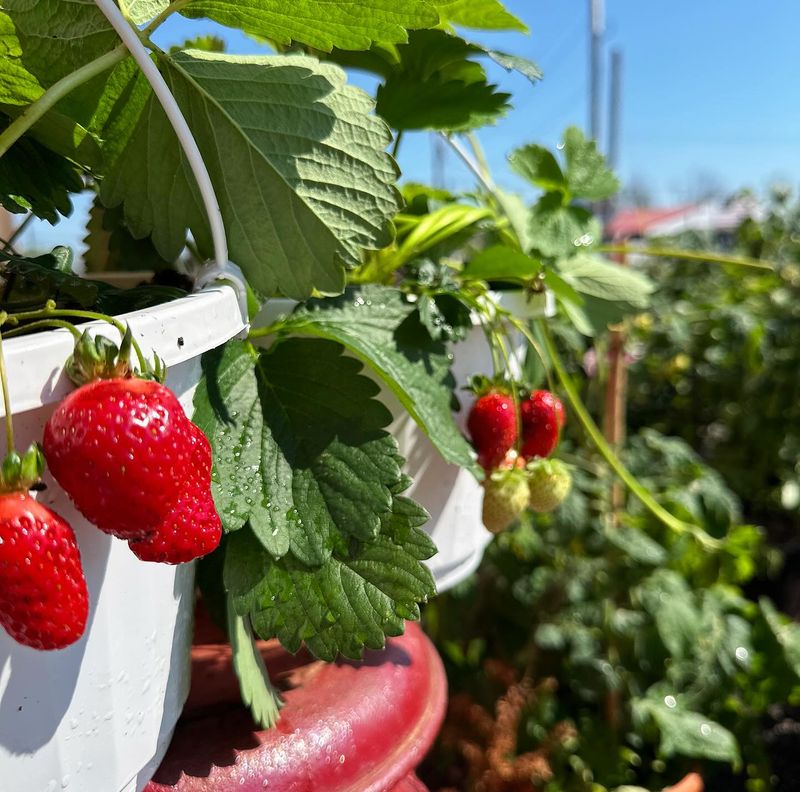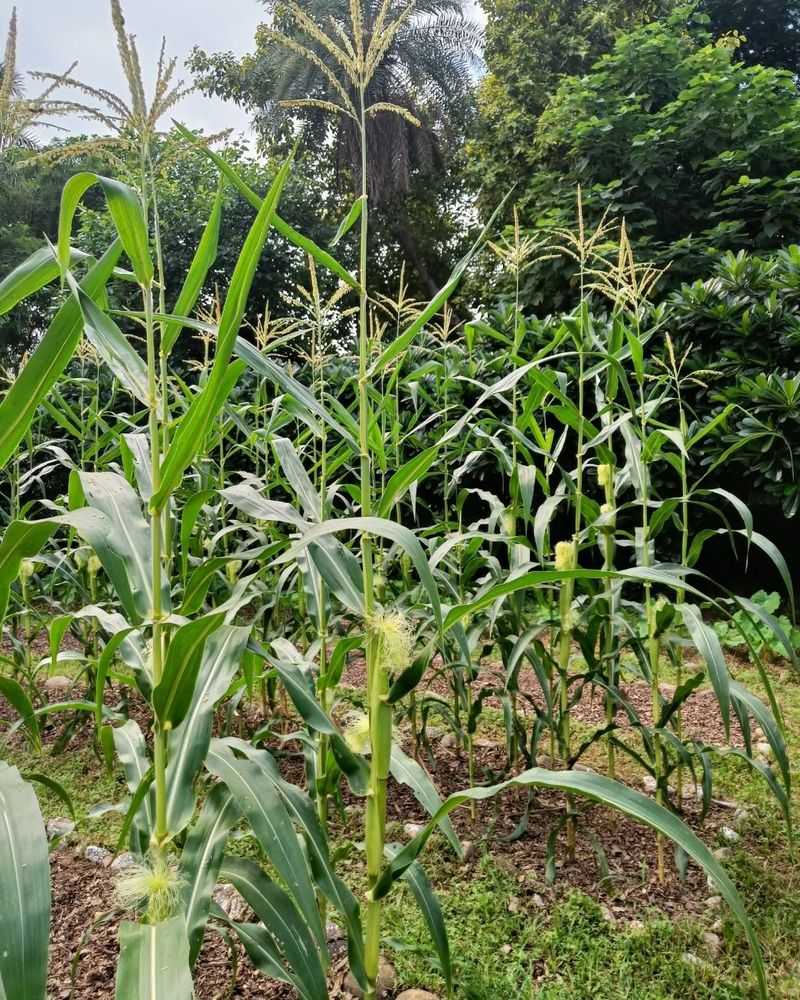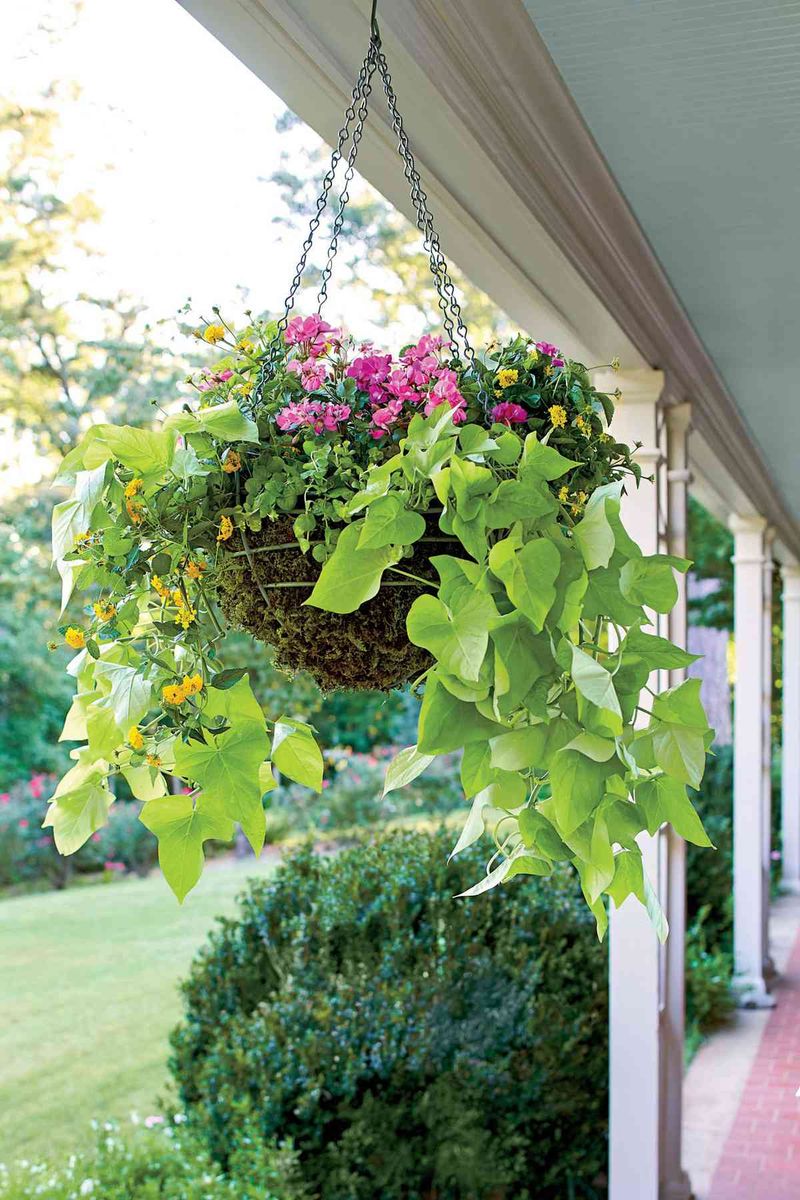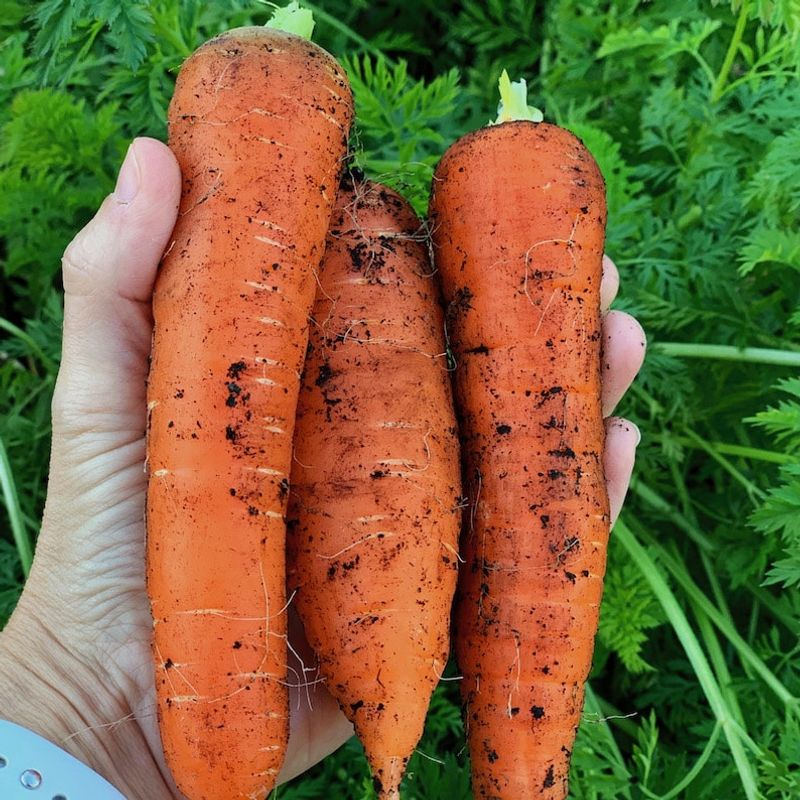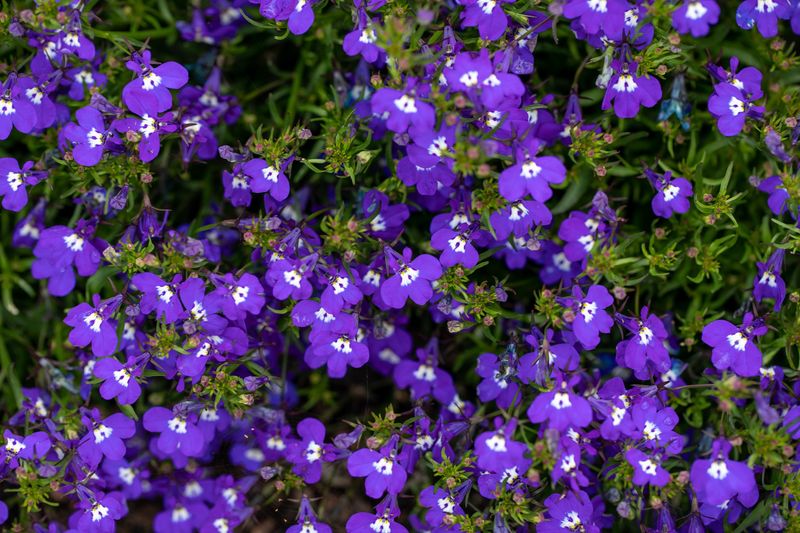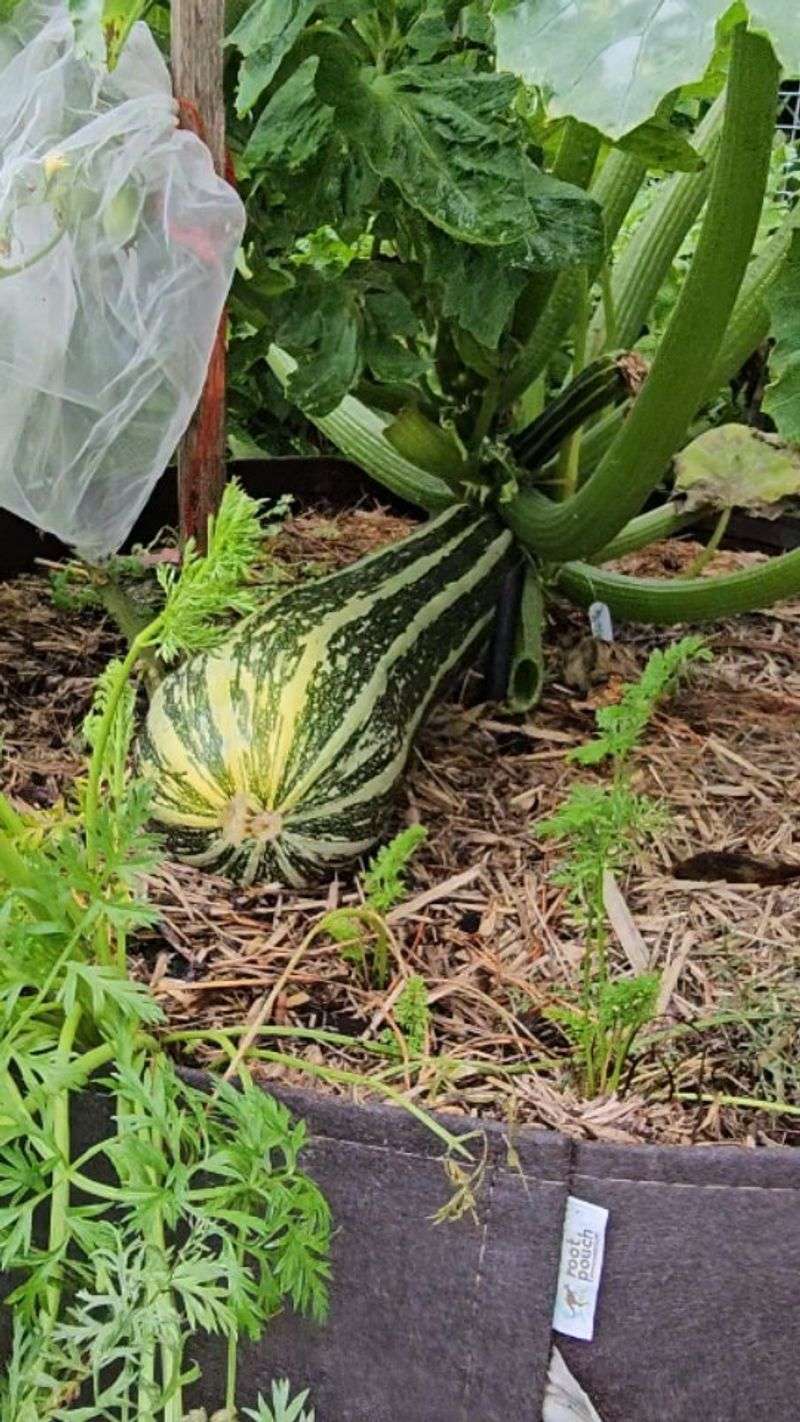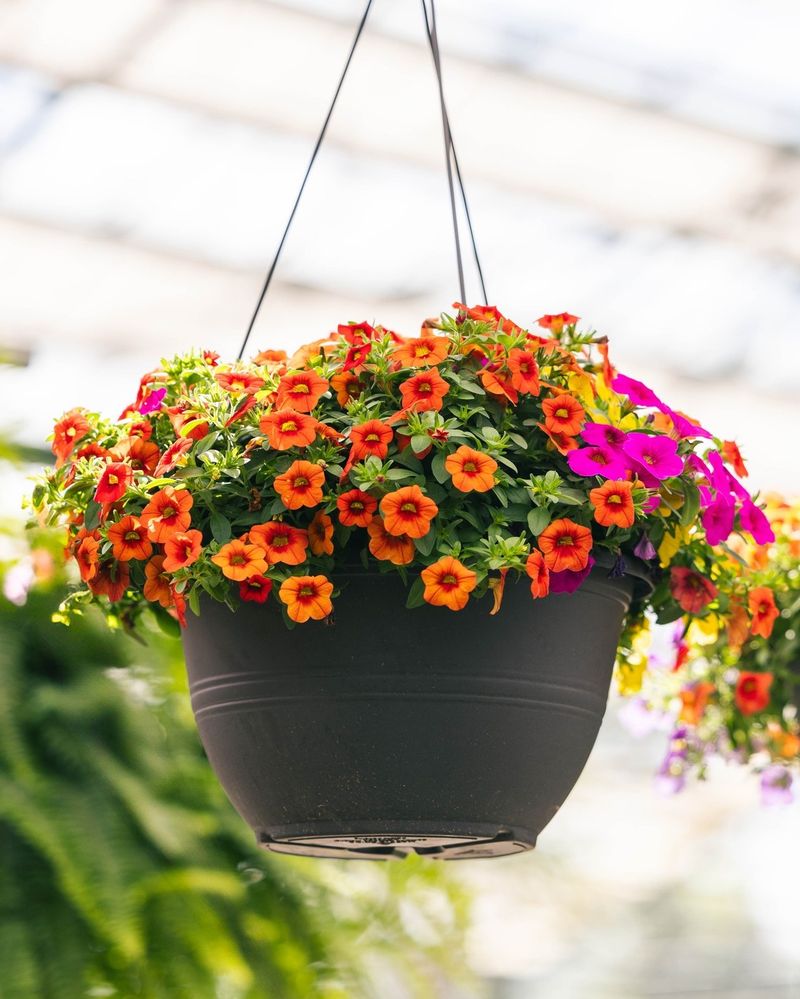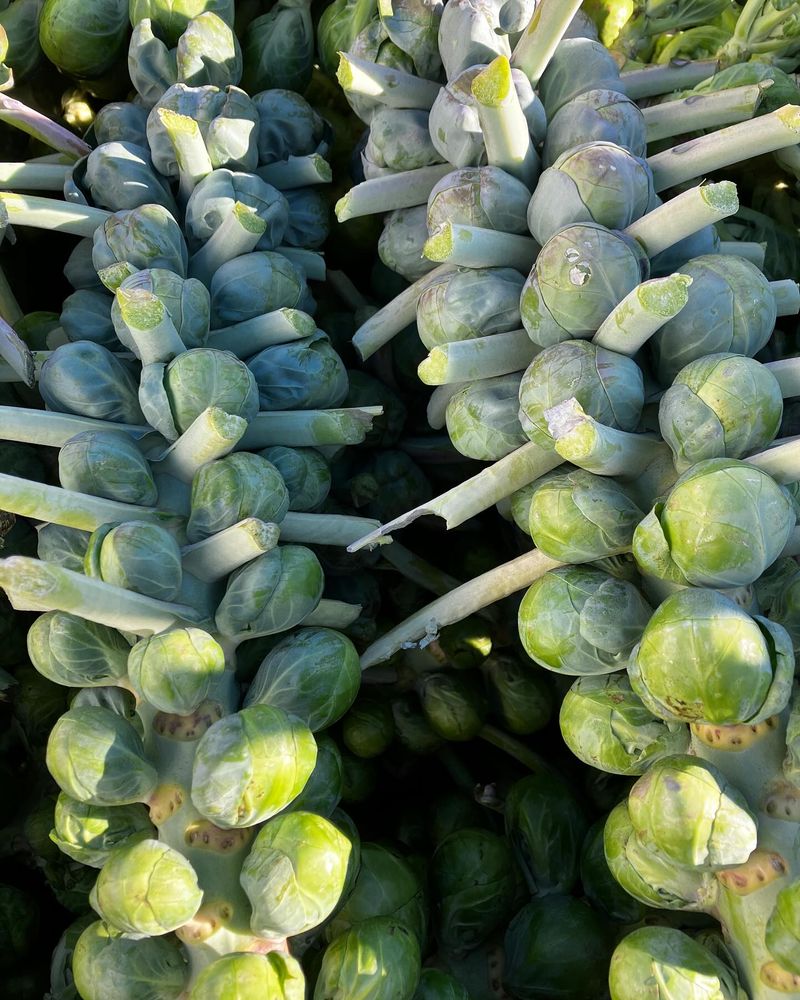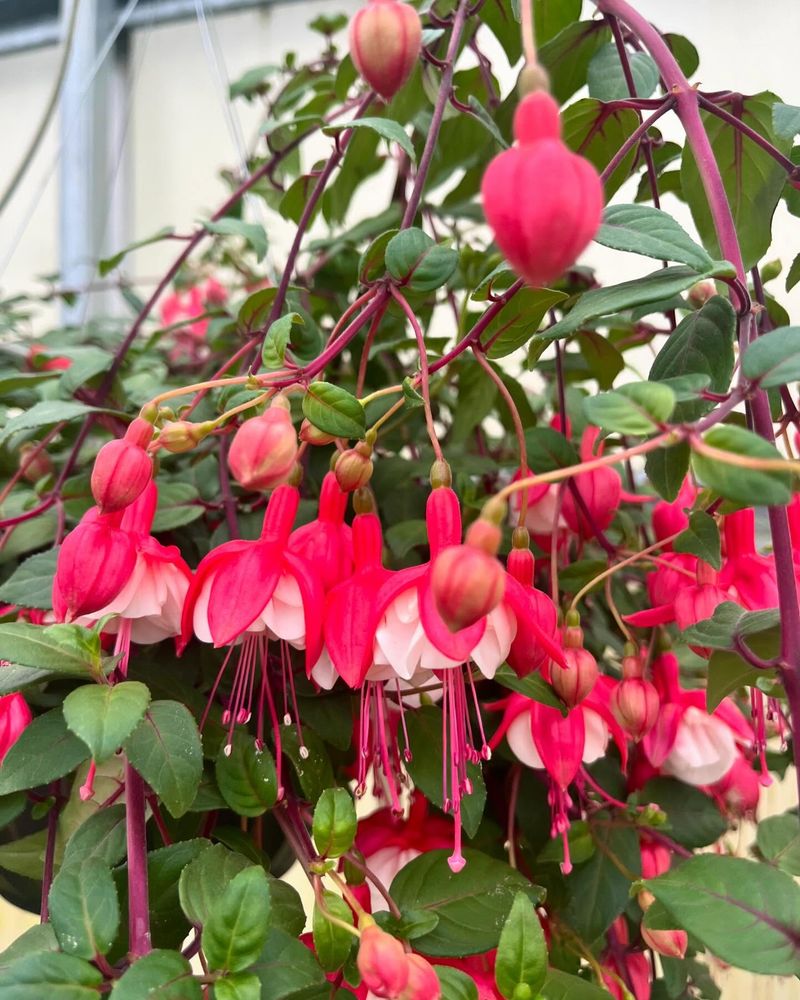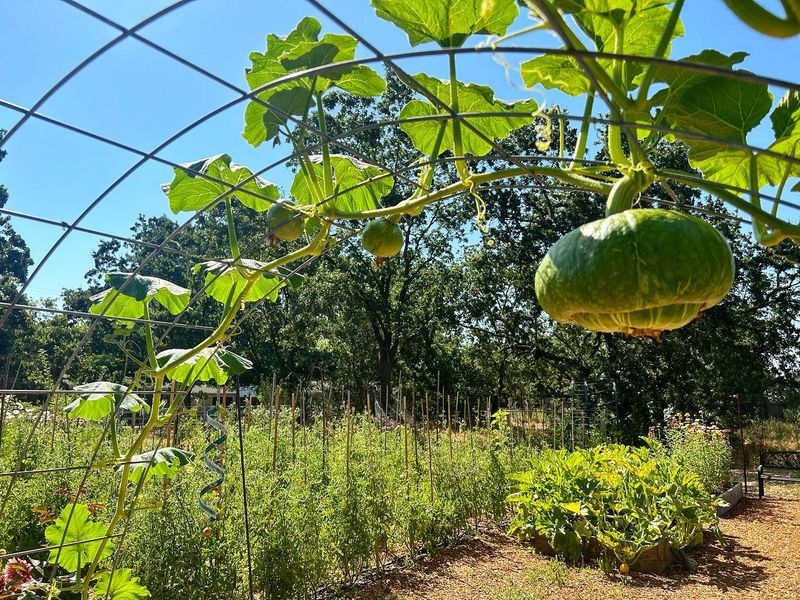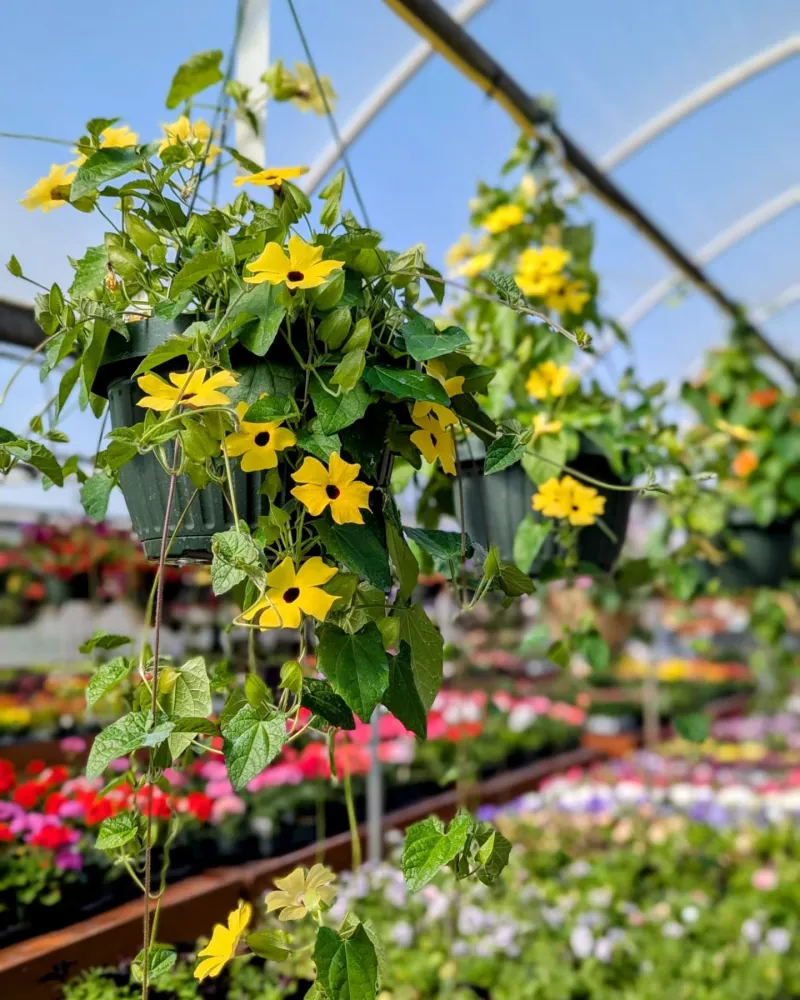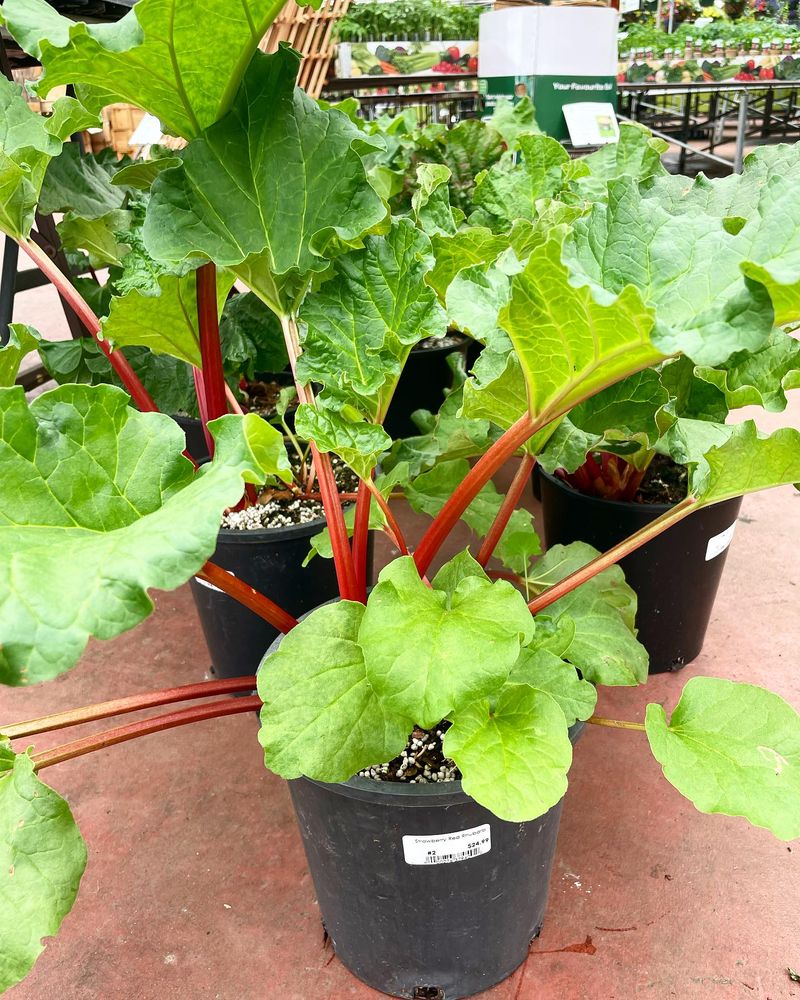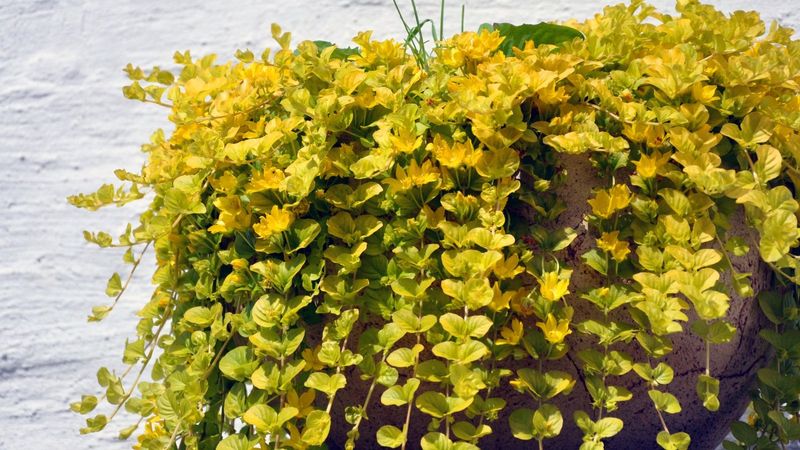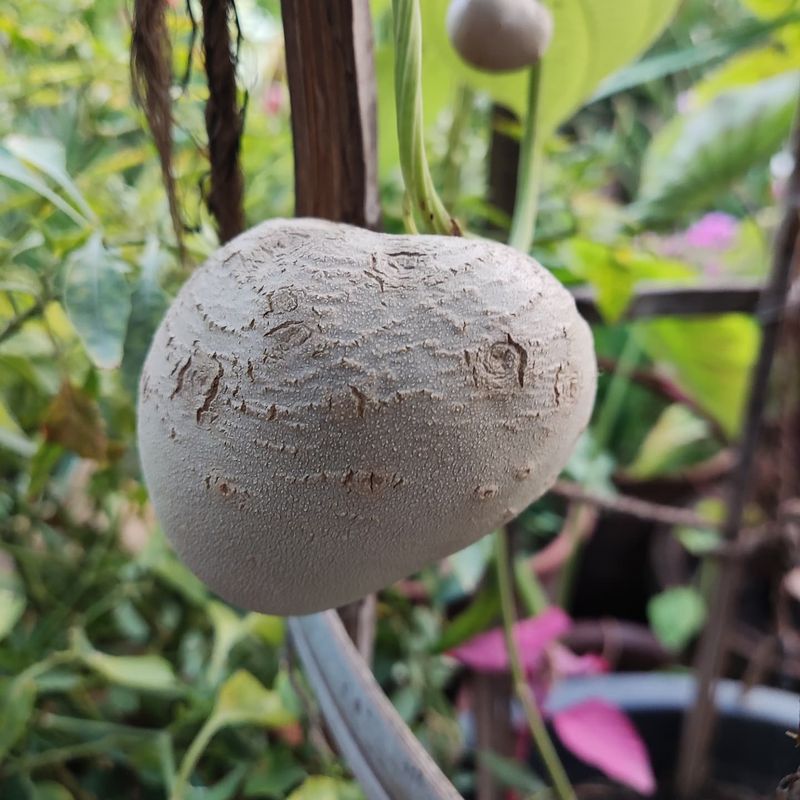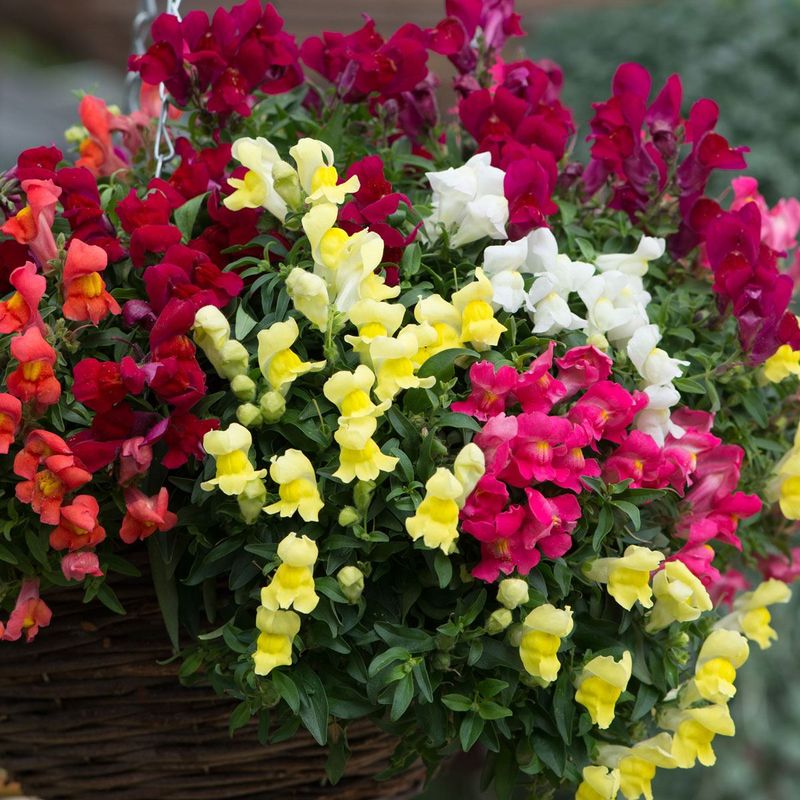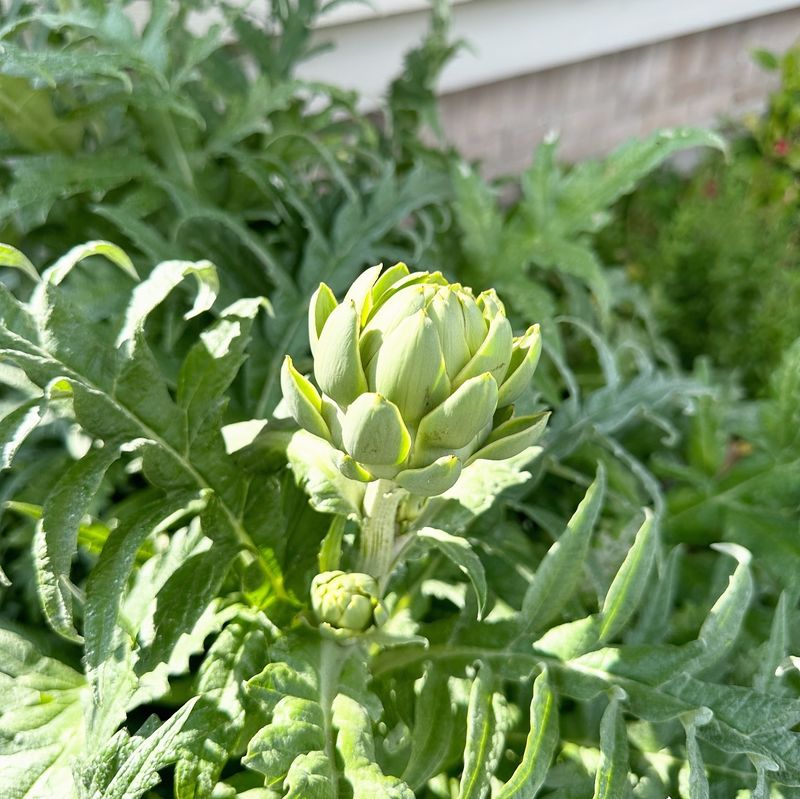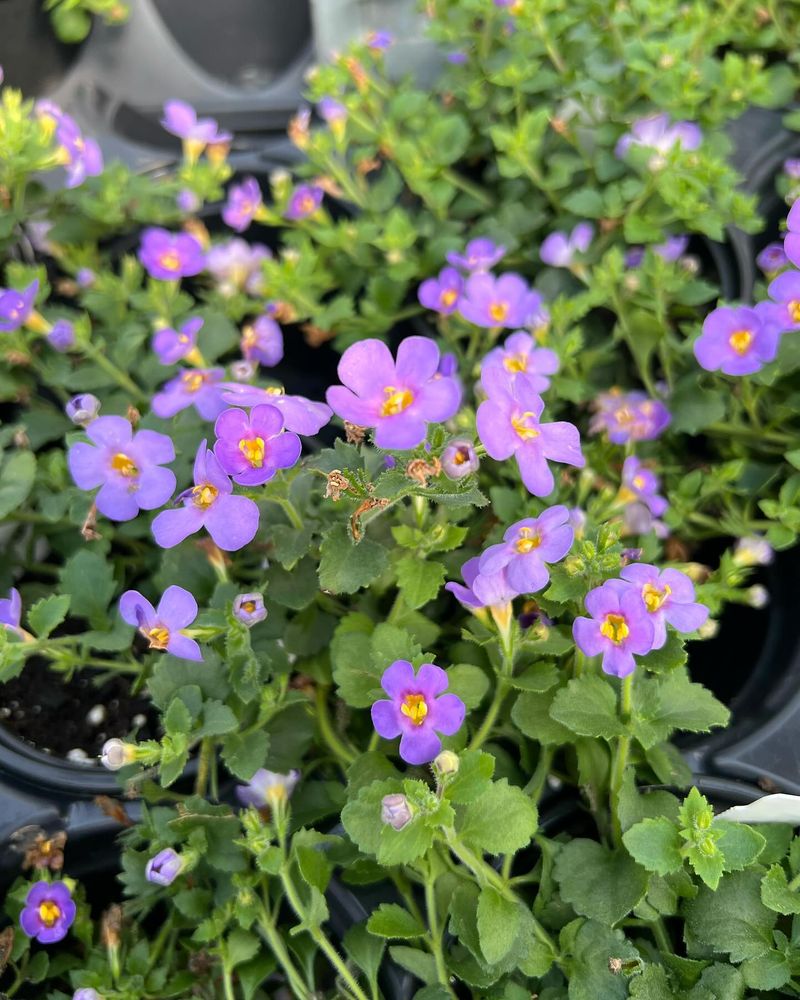Hanging baskets add a touch of greenery to porches, patios, and indoor spaces without taking up valuable floor space. However, not all plants thrive when suspended in the air! Some struggle with the limited soil, increased water needs, or simply grow too large.
Knowing which plants to avoid—and what to choose instead—can save you time, money, and gardening heartbreak.
1. Sunflowers: Too Heavy and Tall
Sunflowers might seem cheerful for hanging displays, but they’re disaster waiting to happen. Their heavy heads and towering stalks quickly become top-heavy, causing baskets to tip or break their hooks entirely.
The extensive root systems that sunflowers develop also quickly become cramped in basket environments. As they stretch toward the sun, these giants can reach 6-12 feet tall—hardly suitable for suspended gardening!
2. Petunias: The Perfect Cascading Alternative
Unlike their sunflower counterparts, petunias were born for hanging basket life! Their trailing habits create gorgeous waterfalls of color that can spill 2-3 feet below your container.
Petunias thrive in the well-drained conditions that hanging baskets provide. Available in virtually every color of the rainbow, they bloom continuously from spring until frost with just minimal deadheading. Their moderate water needs make them forgiving for busy gardeners.
3. Tomatoes: Root-Bound Disasters
Garden-variety tomatoes spell trouble in hanging situations despite their seemingly compact nature. Their aggressive root systems quickly outgrow even large baskets, leading to stunted growth and poor fruit production.
Water requirements become nearly impossible to maintain as mature plants may need watering multiple times daily during hot weather. The weight of developing fruit creates additional strain on your hanging apparatus. Even determinate varieties eventually become too heavy and unwieldy.
4. Strawberries: Sweet Hanging Success
Strawberries were practically designed for hanging basket life! Their naturally trailing habit allows berries to dangle safely away from soil, reducing rot and pest damage.
The compact root systems of strawberry plants work perfectly within the confined space of baskets. Day-neutral varieties like ‘Seascape’ or ‘Albion’ produce sweet berries throughout the growing season rather than all at once. Hanging them at eye level makes harvesting a breeze!
5. Corn: The Obvious Vertical Failure
Corn in hanging baskets sounds absurd for good reason! These tall grasses need exceptional root depth and stability to support their height and prevent toppling in wind.
Multiple plants are required for proper pollination, making basket growing impractical. Corn’s heavy nutrient demands quickly deplete the limited soil volume available in hanging containers. The shallow root-to-height ratio creates an unstable situation that’s bound to end with your corn crashing to the ground.
6. Sweet Potato Vine: Cascading Color Champion
Sweet potato vines bring electric chartreuse, purple, or bronze foliage that spills dramatically from hanging baskets. Their vigorous growth habit creates impressive cascades that can reach 6-8 feet long in a single season!
Unlike actual sweet potatoes grown for harvest, these ornamental varieties focus energy on lush foliage rather than root development. They tolerate partial shade while maintaining their vibrant colors. Pair them with upright flowering plants for stunning combinations that draw the eye upward and downward simultaneously.
7. Carrots: Hidden Harvest Headaches
Growing carrots in hanging baskets creates problems from day one. These root vegetables require deep, loose soil to develop their characteristic taproots—something hanging baskets simply cannot provide.
The shallow depth results in stunted, malformed carrots that never reach their potential. Constant moisture requirements become challenging in the quick-drying environment of suspended containers. The weight of proper growing medium would strain hanging hardware beyond safe limits.
8. Lobelia: Blue Waterfall Wonder
Lobelia creates magical blue, purple, or white cascades that seem to float in mid-air when planted in hanging baskets. Their compact size and trailing habit make them perfect suspended specimens.
Heat-tolerant varieties like ‘Techno Heat’ bloom continuously without the summer slump that affects older types. Their shallow root systems thrive in the limited soil volume of hanging containers. The delicate flowers appear in such profusion that you can barely see the foliage beneath!
9. Zucchini: Space-Hogging Mistake
Zucchini plants become basket-breaking monsters within weeks of planting! Their sprawling growth habit quickly outpaces any reasonable container, with vines stretching 3-4 feet in all directions.
The large leaves create wind-catching sails that risk bringing down your entire setup. Heavy fruits place structural stress on stems that weren’t designed for hanging positions. The extensive watering needs become nearly impossible to satisfy as plants mature and begin producing squash.
10. Million Bells: Tiny Flowers, Huge Impact
Million Bells (Calibrachoa) deliver petunia-like blooms in miniature form that never need deadheading! Their naturally branching habit creates rounded cascades covered in hundreds of tiny trumpet-shaped flowers.
Modern varieties thrive in the slightly acidic conditions that develop in hanging baskets. Available in every color imaginable—including stunning bicolors and star patterns—these tough plants bloom continuously from spring through fall. Their moderate drought tolerance forgives occasional watering lapses.
11. Brussels Sprouts: Comical Top-Heavy Failure
Brussels sprouts create unintentionally hilarious hanging basket specimens—until they crash to the ground! These brassicas develop tall, top-heavy stalks with weight concentrated entirely at the top.
Their lengthy growing season (80-100 days) occupies your hanging space for months with little visual appeal. The shallow root systems can’t properly support the heavy sprouts that develop along the stems. Cool-season requirements make them impractical for warm-weather hanging displays when baskets are typically used.
12. Fuchsia: Elegant Dancing Blooms
Fuchsias produce some of the most elegant hanging displays with their pendulous, two-toned flowers that resemble tiny ballerinas in tutus! Their naturally arching growth habit was made for suspended containers.
Thriving in partial shade makes fuchsias perfect for hanging in porches and under trees where few other flowering plants perform well. The cool-temperature loving nature of these plants makes them excellent spring and fall performers. Hummingbirds find their nectar-rich blooms irresistible!
13. Pumpkins: Vine Catastrophe Waiting to Happen
Pumpkin vines stretch up to 20 feet long—clearly incompatible with hanging basket dimensions! Their rampant growth quickly escapes any container, creating an unmanageable tangle.
The developing fruits become impossibly heavy, with even mini varieties weighing several pounds each. Extensive watering needs make maintenance a constant chore. The large, hairy leaves are prone to powdery mildew in the restricted airflow of hanging situations.
14. Black-Eyed Susan Vine: Cheerful Trailing Alternative
Black-eyed Susan vine (Thunbergia) creates cheerful cascades of bright yellow, orange, or white flowers, each sporting that distinctive dark “eye” center. Unlike their garden-variety namesakes, these vines were born to trail from heights.
The quick-growing habit provides rapid coverage, with vines stretching 3-8 feet in a single season. Their heart-shaped foliage creates an attractive backdrop even when flowering slows. Heat tolerance keeps them blooming through summer when many other hanging basket options struggle.
15. Rhubarb: Basket-Breaking Proportions
Rhubarb’s enormous leaves quickly outgrow any reasonably sized hanging container! These perennial vegetables develop extensive root systems that become severely restricted in baskets.
The impressive size of mature plants—often 3 feet tall and wide—creates unbalanced, top-heavy arrangements. Harvesting would require removing the entire basket from its hook. The hefty watering requirements become particularly challenging in the enhanced drainage conditions of hanging planters.
16. Creeping Jenny: Golden Waterfall Effect
Creeping Jenny (Lysimachia) creates stunning chartreuse cascades that brighten any hanging display! The coin-shaped leaves form living curtains that can trail 2 feet or more from your basket edge.
This perennial ground cover finds its perfect expression when allowed to spill from heights. The brightest gold coloration develops in sunny spots, while partial shade locations maintain a more lime-green appearance. Its vigorous nature ensures baskets look full and lush throughout the growing season.
17. Potatoes: Underground Performers Need Ground
Potato plants simply cannot develop properly when suspended in air! The tubers require consistent soil coverage as they form—impossible in the exposed conditions of hanging baskets.
The plants themselves grow surprisingly large, with bushy foliage stretching 2-3 feet high and wide. Proper harvesting would involve destroying your entire hanging arrangement. The heavy watering requirements become particularly challenging as plants mature and tubers begin developing.
18. Trailing Snapdragons: Cascading Color Surprise
Unlike their upright garden cousins, trailing snapdragon varieties were bred specifically for hanging displays! Varieties like ‘Cascade’ and ‘Luminaire’ create living waterfalls of traditional snapdragon blooms.
Their ability to bloom in partial shade makes them versatile for various hanging locations. The familiar snapdragon flower form comes in vibrant pinks, purples, yellows and bicolors on plants that cascade 12-24 inches. Their cool-season blooming habit makes them perfect for spring and fall displays.
19. Artichokes: Architectural Disasters
Artichokes create dramatic architectural plants—entirely unsuited for hanging displays! These perennial thistles develop enormous silvery foliage that can spread 4-6 feet wide in all directions.
The edible flower buds become incredibly heavy as they develop. Deep taproots quickly become constricted in container environments. The striking appearance that makes artichokes wonderful garden specimens works against them in hanging situations where their impressive size becomes a liability.
20. Bacopa: Delicate White Waterfall
Bacopa creates delicate cascades covered in tiny white, blue, or pink flowers that bloom continuously without deadheading! The trailing stems can reach 12-24 inches long, creating living curtains of color.
Unlike many hanging basket options, bacopa tolerates both sunny and partially shaded conditions with equal grace. The small leaves remain attractive even during brief flowering pauses. Modern varieties have improved heat tolerance, allowing them to perform throughout summer when many hanging options struggle.

